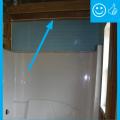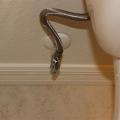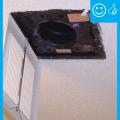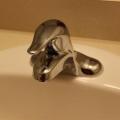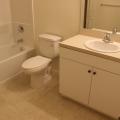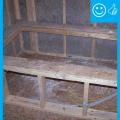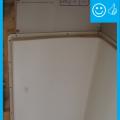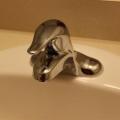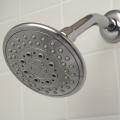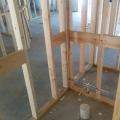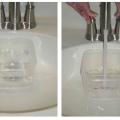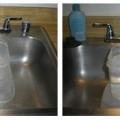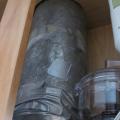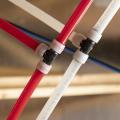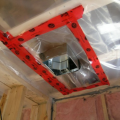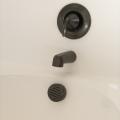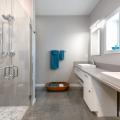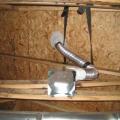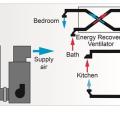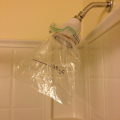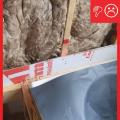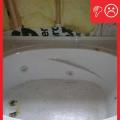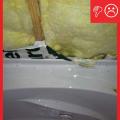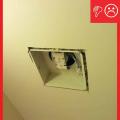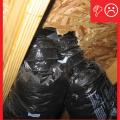Showing results 51 - 100 of 112
Right – An escutcheon is installed on this toilet tank pipe to help air seal around the pipe and prevent pest entry.
Right – Blocking was installed in the walls behind the tub for installation of grab bars.
Right – EPA WaterSense-rated faucets reduce water usage compared to standard bathroom faucets.
Right – EPA WaterSense-rated low-flow showerheads reduce water and energy usage compared to standard showerheads.
Right – EPA WaterSense-rated showerheads, faucets, and toilets contribute to both water and energy savings.
Right – Fan with a cleanly cut and properly sized hole has been air sealed to drywall
Right – Moisture-resistant backing material has been used above and behind the tub enclosure.
Right – The master bathroom has a handicapped-accessible shower with curbless entry and an adjustable-height hand shower.
Right – The PEX piping and sink drain of this bathroom sink are fitted with escutcheons that help to air seal around the pipes and prevent pest entry.
Showering accounts for 1.2 trillion gallons of water per year in the United States.
Solid wood blocking was installed in the walls to accommodate future grab bars in both bathrooms.
The exhaust fan housing may have holes that allow conditioned air to leak into the attic
The gap around this kitchen exhaust duct represents a significant source of air leakage to the unconditioned attic
The pipe connections for faucets, dishwashers, garbage disposals, and other water using appliances can be a source of leaks.
The polyethylene ceiling vapor barrier is sealed to form an air barrier around the exhaust fan in this very cold climate location (≥ CZ 6).
The shower diverter in bath/shower combinations is one of the common sources of leaks in tub faucets.
The solar tube installed in the ceiling of this bathroom brings natural light into an interior room that doesn’t have window access.
This air handling unit provides outside air at the same rate as the air being exhausted from the bathroom exhaust fan; local kitchen exhaust is provided by a range hood with a dedicated makeup air intake and dehumidification is provided by a separate unit
This bathroom is handicapped accessible with a zero-entry shower and roll-up sinks.
This builder installs spray foam in exterior wall cavities where tubs and showers will be installed to air seal and insulate the exterior wall.
This home is piped with an insulated hot water recirculation loop that speeds hot water to each fixture while helping to reduce water waste.
Threaded connections are one source of leaks in showerheads and showerhead arms.
Vent the kitchen fan exhaust directly to the outside, not into an attic, crawlspace, or space between floors
Ventilation in this dwelling unit is provided by an Energy Recovery Ventilator; local kitchen exhaust is provided by a range hood with a dedicated makeup air intake; conditioned air is provided by an air handler
Ventilation in this unit is provided by an Energy Recovery Ventilator; local kitchen exhaust is provided by a range hood with a dedicated makeup air intake; conditioned air is provided by an air handler and dehumidification is provided separately
WaterSense-labeled showerheads release ≤ 0.35 gallons of water in a 10-second flow test.
Wrong - Two exhaust terminations are joined in a roughly cut, restrictive hole that is not air sealed.

